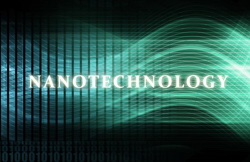Enhancing visualisation of nanostructures
Two of the most widely used technologies for both imaging and micromachining of materials in research, development, and manufacturing are focused ion beam (FIB) systems and focused electron beam systems. The former are used in secondary ion mass spectrometry (SIMS). The latter are employed in transmission electron microscopy (TEM) and X-ray photoelectron microscopy (XPS). European researchers initiated the ‘Nanoanalysis using finely focused ion and electron beams’ (Nanobeams) project to bring together manufacturers of such equipment with leading scientists and researchers in the field of nanomaterials. The objective was enhanced development of efficient instrumentation in the area of nanoanalysis. The Nanobeams consortium created a doctoral programme on ‘Nanoanalysis using finely focused ion and electron beams’. It is now integrated into the curriculum of the University of Luxembourg and should provide significant stimulus to the nanoanalysis research sector. Various user schools and training programmes were implemented, enabling the user community to hone skills related to state-of-the-art techniques as well as providing the opportunity for industrial manufacturers of related equipment to establish contact with potential future customers. The consortium is currently developing a new technique combining time-of-flight SIMS (ToF-SIMS) and scanning force microscopy (SFM) for quantitative nanoanalysis. The technology should facilitate commercialisation of new products and applications for patents. Technical innovations of the Nanobeams project included development of novel techniques for reliable high-resolution chemical analysis of a variety of sample types. Results have been widely published and led to enhancements in commercially available instrumentation. Overall, the Nanobeams project established important links between academic researchers and industrial manufacturers of state-of-the-art ion and electron beam instrumentation for nanoanalysis. Collaboration has led to enhancements in high-tech instrumentation as well as stimulation of research in nanoanalysis. Both promise to boost the competitiveness of the European economy in the field of nanotechnology.

